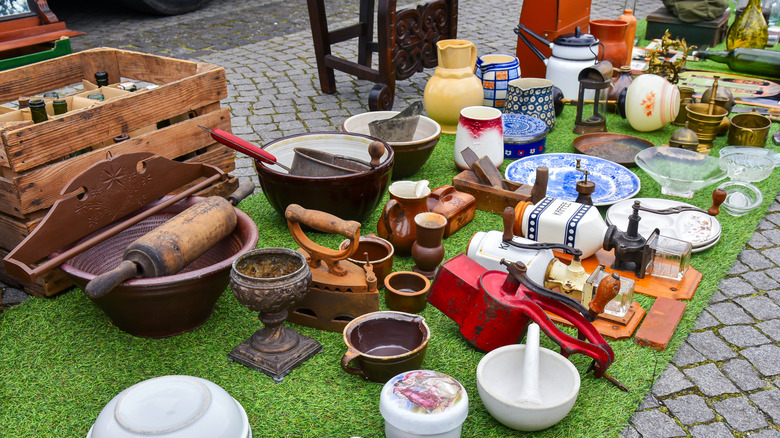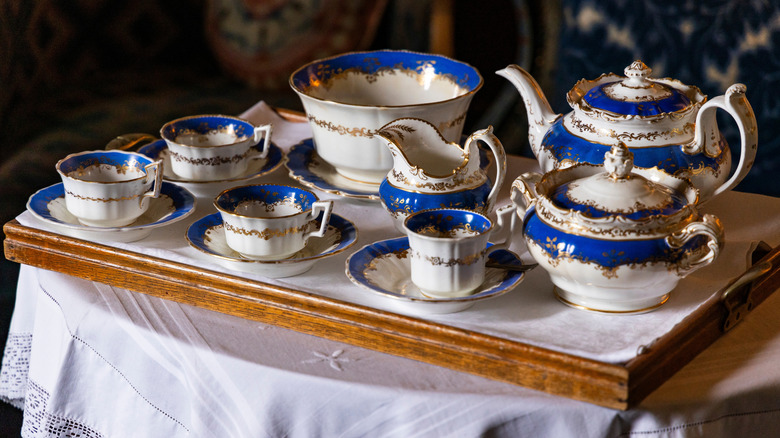The Prized Household Item You Shouldn't Pass Up If You Spot It At An Estate Sale
Estate sales are one of the best places to score gorgeous, high-quality vintage pieces for a bargain price. But if you are new to shopping second-hand, they can be a bit overwhelming, and you may end up leaving before you even get to the good stuff. If you want to make the most of an estate sale, you should go in knowing what you want to find, how much you are willing to spend, and how to determine whether it is actually of quality. There is one go-to that is one of many prized items you won't want to overlook at an estate sale, and it's small enough to fit in a tote bag — porcelain plates and tableware.
Porcelain is often confused with ceramic, and it's not a difficult mistake to make. Porcelain is — technically speaking — a type of ceramic. But it is made from roughly 30-40% of fine-grained kaolin clay and fired at higher temperatures, which makes it particularly durable and harder than your standard ceramic. It also tends to be more resistant to stains and scratches than other ceramics, though that doesn't mean that it is completely impervious to damage.
How to determine whether your prized piece is porcelain
Whether you find a piece beautiful is up to the eye of the beholder, but there are some tricks on how to tell if your find is even made of porcelain. Because it is more durable, porcelain tableware is generally thinner. While not all porcelain tableware will allow light to show through, most are somewhat translucent, so if you find one that is, there is a high likelihood that you've found a porcelain piece. If you aren't sure whether you can see light through or not, pass your fingers between the light source and the plate. If it is porcelain, then you should be able to see a slight shadow where your hand blocks the light.
You can also detect porcelain by using another sense: feel. When holding it in your hand, porcelain will also generally feel colder and lighter than other pottery. Porcelain is visually stunning, and it looks and feels expensive. Additionally, porcelain has an appearance of delicacy. In fact, white porcelain is prone to gray marks from silverware.
One thing to note when choosing porcelain tableware, however, is determining your use for it. If you are simply looking for something to use as decor, the materials don't necessarily matter. But if you are going to be eating off your porcelain find, you want to ensure that you test it for lead which can be present in vintage glaze though not in the ceramic itself, and be sure that if your tableware has any sort of metallic feature you are not using it in the microwave as it could be a fire hazard.

